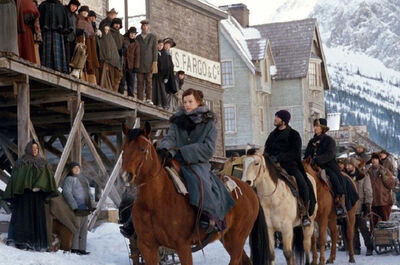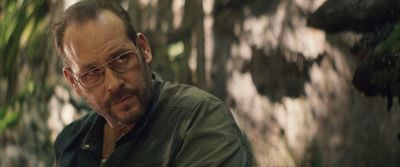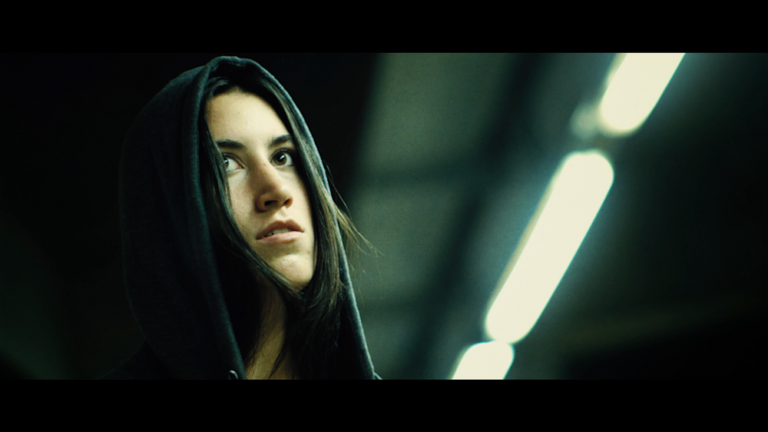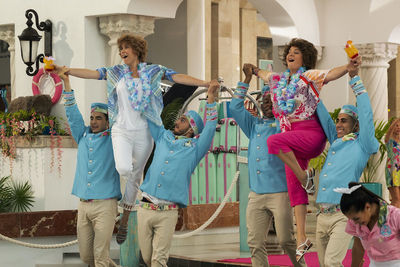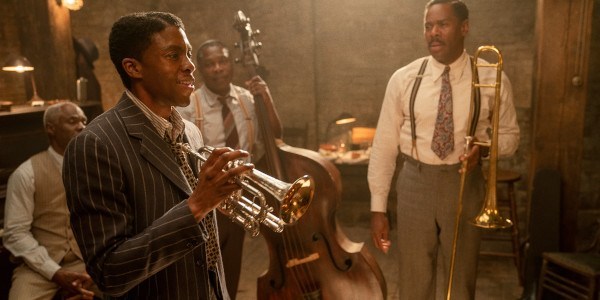High Powered: Aaron Moorhead and Justin Benson on Synchronic
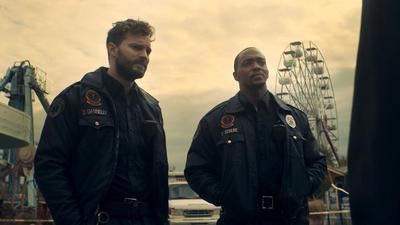
There’s such a thing as a really bad trip and then there’s the frightening, mind-bending experience from a drug named Synchronic, which sends its user to an unknown point in time for seven minutes. Results vary. In the latest film from co-directors Aaron Moorhead and Justin Benson, the directors depict a New Orleans paramedic named Steve (Anthony Mackie) who learns about this mysterious pill, and tries to understand how it works. While Steve has his own emotional reasons for risking the side effects, the stakes are raised when Brianna (Ally Ioannides), the daughter of his paramedic partner Dennis (Jamie Dornan), vanishes suddenly. She’s taken the drug, but no one knows where she is in the expanse of time.
Moorhead and Benson have created their own type of sci-fi storytelling that’s trippy but keeps your feet firmly planted on the ground. Part of that comes from their DIY filmmaking—on “Synchronic” they share directing duties, editing duties, and Moorhead is a cinematographer while Benson is the credited writer. They’ve also been lead actors in their films too, as with their 2018 movie “The Endless,” about two brothers who return to the UFO cult they once escaped. The two friends’ dedication to filmmaking even extends to hair, as one of that movie’s opening jokes involves Moorhead randomly shaving a big line down the middle of Benson’s head.
On the morning of our conversation about “Synchronic,” I see the next iteration of Moorehead and Benson: Moorehead’s hair is shaved, and Benson is now sporting long hair with blue tips, as if ready to surf a neon wave. It’s going to be a day of filmmaking for what Moorhead calls “a three person movie,” and they’re the cast and crew. But before they got back to set, the two filmmakers talked with us about “Synchronic,” working with Dornan and Mackie, bad drug trips, and more.
What was the eureka moment when you found the name of the drug, Synchronic?
JB: I think it’s weird, because on the one hand, the movie is not like, a comedy. It has funny moments, but it’s not a comedy, so you don’t want it to have a funny name, but you want to name the movie after the synthetic drug in the movie. Drugs always have funny names. They sell them at hemp shops, so it’s always like, “Brain Blast,” or they’ll copy the name “Limitless” from the movie. And it seemed like if we were synthetic drug manufacturers like K1 or Spice, you want to get the word “chronic” in, there’s some intellectual real estate with that word, obviously. And then the word “synchronic” deals with time. It’s a perfect line between silly and, “Would it exist on that packaging?”
AM: Nobody would know you’re talking about a drug, and giggle. But when you do, you think, “Oh, chronic!”
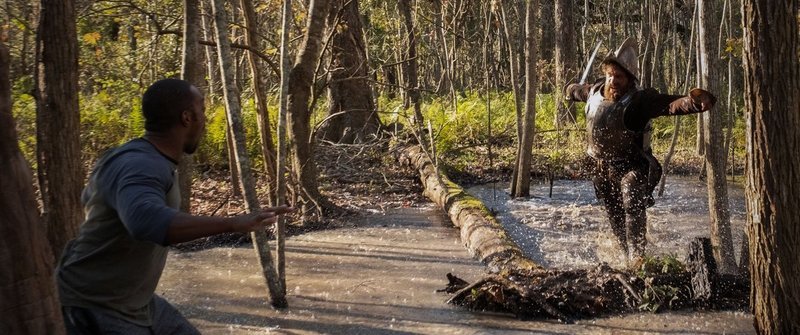
I’m surprised there aren’t more “The Chronic” and Dr. Dre memes about your movie.
AM: We just don’t want to get sued, that’s all! We made the memes and we sent it to our Slack chat, but we just don’t want to get sued. I’m pretty damn good at Photoshop, and you can already imagine what we’ve made.
JB: But it’s also, you’re kind of setting yourself up for failure in a way. Your movie has in its title just a word from literally one of the greatest albums of all time.
It’s definitely separate on its own. You have to see the movie to think that it’s a drug.
AM: Otherwise it’s just a sci-fi title.
And there’s a certain art to naming sci-fi movies.
AM: Yeah, to be honest. “The Endless” was a whole process. Actually, it was a whole process of us spending about an hour and a half on Thesaurus.com one day, trying to find the word that meant the things we were trying to make it be. “The Infinite” … actually it was called “Conformity” at one point, but then we realized that movie is not about conformity, exactly.
JB: Oh my gosh, we were hesitant to call “The Endless” that because it was the name of a script I wrote in like 2009 that will never see the light of day.
With “Synchronic,” was it always paramedics that you were going to frame the drug and story around?
AM: It was always going to be paramedics. We knew that we needed … if we could just look at it from a logical story level, we knew that our characters had to be able to investigate this thing, which meant they’d have to go different scenes in which this would take place. And really the instant go-to would be the police officer, but there’s a whole bunch of problems with that. They would have been too powerful as characters. If they wanted to figure this out they could have just started kicking in doors, flashing a badge, and pointing a gun. And we thought, OK, that’s too powerful. We need to give them a disadvantage, where they have to figure this out without any form of force. And the other thing is, no matter what, a poster would feature two dudes back to back with guns. Because we can’t control that. And we’re like, one thing we can control is not making people have guns.
JB: That poster, it’s like, we don’t need any more of those posters. Even from an artistic standpoint of poster making, we appreciate the art, but we’ve got so many of those. And then on a darker, more personal level, I have several gun deaths in my family. And for me, to have posters like that for our movies, seems like the most disrespectful thing.

Does that personal aspect make you more interested in not using guns in storytellers? Do you avoid them in other scripts?
JB: In the writing, we really try to. Some of that is an ethical thing. And a lot of it is just … oftentimes it could be argued that it’s sort of a lazy choice.
AM: [Guns are] this great equalizer in which every character suddenly has the same amount of power. And that’s also true in real life, that’s why people love guns. You don’t have to be physically strong to hold power. So as a storyteller, you think, what’s the harder way to do this? How do you make it harder for your characters? Once you give them a gun, or any powerful weapon really, they start becoming more generic, weirdly enough. Because all they have to do is pull the trigger, there’s no other choice involved, there’s no other cleverness involved. I guess you could make them very bad or good with guns.
Was there any influence from Scorsese’s “Bringing Out the Dead” in how you guys approached paramedic-based drama?
JB: I think that neither one of us had seen “Bringing Out the Dead” until we were studying lighting set-ups on movies like this one. That was well after the script was written. That’s not because we didn’t like the movie.
AM: The main influence when it came to paramedics, we read this book called Paramedic, and another called … oh man, I can’t remember it. But these books written by paramedics, and they were spectacular writers that talked about a whole bunch of different jobs, but also looked at their profession on the long term, and to where it kind of puts you. And the biggest thing that it did was, you realized that they never stopped caring, and they never stop being completely exhausted of seeing the same thing over and over. There’s kind of this breaking point that you reach as a paramedic. And that informed Jamie and Anthony’s characters, where it’s like, everything is routine, and everything is different. And there’s this line in there, “They say you see everything once in this gig.” And it’s interesting, because you see everything one time. Everything is totally different, and you’ve also seen everything.
What freeness do you get as filmmakers when working with stars like Mackie and Dornan? Is there any connection in the casting to how this film has longer takes than usual for you guys?
JB: You know, I’m going to say that it changes the process quite a bit. Because when you work with people who are as accomplished as Jamie and Anthony, they are extraordinarily busy people. And so you don’t get six weeks just to go workshop with them; when it’s the two of us, we’re seeing each other every day and running scenes. But that said, there’s also this thing, in that those two guys are so extraordinary talented, they are such kind people, they’re very attractive, charming people, so when you’re telling a story with flawed characters, it’s a trickier thing. When it’s us, it’s like, “Oh, those guys are flawed.” [laughs] I’m not supposed to go on a journey with those characters in “The Endless” and be like, “They’re our heroes!” Whereas with “Synchronic” when you first see Anthony Mackie and Jamie Dornan, they’re the heroes, and then you need to convince your audience that they’re flawed people.
AM: You’ll notice they’re not wearing a bunch of tight shirts. They’re not in particularly flattering lighting, we deliberately would top light them and stuff like that. So they just look like people standing in regular situations, as opposed to what you would consider a glamorized look at what they’re doing. And that was very purposeful. It was definitely the movie in which they look the most like themselves, as opposed to anything resembling a photo shoot. As much as we try, obviously other filmmakers have succeeded in the same way.
JB: To Aaron’s credit, it’s very hard for a director of photography to make Jamie Dornan and Anthony Mackie not look extraordinarily sexy.
AM: Oh, they’re extraordinary sexy. But that’s just them.

It’s funny you say that you didn’t have a lot of time with Dornan and Mackie, because I imagine they could nonetheless handle the pressure of the film’s longer scenes. Like the extended walk-and-talk sequence in the middle, for example.
AM: That was it—that walk-and-talk that you’re talking about actually takes place in front of Anne Rice’s house. And that was very purposeful, that was really important to us. And we actually had two scenes to shoot that day, that scene which was across town and across a bridge. It was a huge logistical problem. People were freaking out, like, “You’ll never make this.” And so we had to have a conversation like, “Guys, we have to run this scene over and over before the day, because on the day we’re only gonna get a few takes, and then we gotta go. And it might be raining too, so be ready for that.” And luckily we dodged some rain drops, and they were just very ready. We did a few angles of it, all as a long walk-and-talk, and we never really needed to cut but we cut some pieces out from it. At dramatic moments, anyway. But they really nailed it, and it’s really nice to say one take one, “That’s a good take.”
JB: This movie was a crazy schedule.
AM: Just to be clear, right now we’re shooting a movie with us as the cast and crew, and our schedule is 20 days. “Synchronic” was 22 days. “Synchronic” was massive!
There’s a clear sense that you guys like what you like visually, starting with match cuts that connect a person’s face in one location to another. How conscious are you of something like that when you’re designing a movie, of your authorship?
AM: “Authorship” isn’t the word I’d use, “instinct” would be the one, like when we put down the shot list. We normally allow ourselves one cool shot per scene.
JB: And this is probably obvious, but most of our match cuts are planned out several months in advance. But it’s weird; sometimes you find one in the edit. Or actually on set, we had a VTR person, someone who could pull up a shot to match from before.
AM: And then we re-edited the whole movie, so some match cuts had to go elsewhere [laughs]. Like that scene that it matches to is now out. There were probably about five more.

There’s also this sense in how your movies are packaged and promoted; even your posters have a similar feeling or design to them.
JB: It’s weird, that the consistency in the marketing materials for our four movies now … for one thing we’ve just been really lucky to work with talented marketing departments and distributors who have very good taste. They’ve also really been collaborative.
AM: We sent a lot of notes.
JB: We’ve been very lucky to have those kind of relationships with distributors that they allow us to give some feedback.
AM: But it is true, that we are able to curate this group of artists that we keep coming back to. Besides the fact we make movies, we’re huge fans of movies. So we always give notes for something we’d want to see, as opposed to just, “what does middle America think?” It doesn’t matter to us, because we are that audience, too.
It seems like you’re creating this brand; people will know more and more what a Moorhead & Benson film looks like. That’s got to help in creating your following.
JB: It’s been a gigantic privilege that we’ve just been really lucky, that no one is obligated to allow us any feedback.
Have you guys had any bad trips before?
AM: Like traveling trips?
Drug trips—that seems to be a running idea with “The Endless” and now this, and I wonder if it’s more than just a coincidence.
AM: I’ve got a weird one that’s not related to a bad trip. Both my girlfriend and my mother—separate people—are psychologists. And through just living with them for my whole life, there’s a fear of losing one’s mind to insanity or senility. And I think that is where a lot of the horror of, “take a pill that you don’t understand and something will happen to your mind,” that is something that actually scares me. Now, how do you take that idea and dramatize that in a film is a different question. How do you make that horror transcend the screen, where it isn’t just a weird concept to talk about, or read about. But I will say that fear is that all of my cohesion of reality might just go away and theres’s nothing I can do about it. That is terrifying to me.
JB: I just remembered what mine is. I’ve had insomnia since I was very little. And I still suffer from it all the time. And my psychiatrist was trying different sleeping medications, newer ones on the markets. I don’t remember the name of this particular one, but she was like, “Try this one, we’ve had good results.” I’m not exaggerating—what happened was that I realized, “I am consciously falling asleep.” And I was asleep but I was aware of every moment of it. And then I reached sleep, and it was free-fall in blackness. For the entire night. I woke up so absurdly scared that I was laughing about it to my girlfriend, though I was terrified.
AM: That’s just enlightenment.
JB: Afterward, I went to like, Drugs.com, and I looked it up. I was seeing personal reviews, and everyone is like, “DO NOT TAKE THIS! Do not take this! It’s terrifying!”
AM: You know what it is? It’s like the FDA regulator took it and was like, “This is some good shit.”
Now playing in select theaters and drive-in theaters

